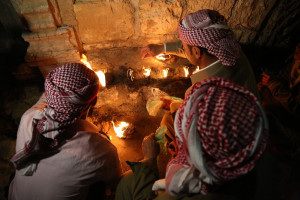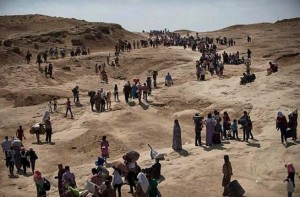On August 7, 2014, President Obama gave a speech announcing a new military intervention in Iraq, a response to the violence being perpetrated by the Islamic State of Iraq and Syria (ISIS) against the Yezidi communities dotted across the Ninewa province. Obama’s authorization of airstrikes and humanitarian aid drops intended to protect American personnel and to help save thousands of Iraqi civilians targeted by ISIS fighters. In his speech President Obama made two references to genocide, stating:
The actions taken to relieve the Yezidis besieged by ISIS on Mt. Sinjar eventually allowed thousands of men, women and children without food and water to flee the mountain. Their homes had been obliterated and their cultural heritage ransacked by ISIS fighters.
However, the 2014 campaign against Yezidis was not the first act of genocidal violence perpetrated against the community. The campaign also failed to absolve the US of its role in inadvertently providing an atmosphere conducive to ethnic cleansing and genocidal violence. The combination of Saddam Hussein’s brutality and the dreadful miscalculations made by American and British policymakers and the former dictator intensified the collapse of the Iraqi state. Equally, the neglect of minority communities in Iraq shown by successive administrations, combined with the dysfunctional government set up by Washington in Baghdad in the post-Saddam era, allowed violence to escalate against the Yezidis.
The Yezidi faith, like the Mandaean one, is a religion shrouded in secrecy by its clergy; it is a monotheist religion that incorporates several elements of the Christian, Zoroastrian, and Islamic faiths. To extremists cells such as Al-Qa’ida and ISIS, Yezidis are regarded as “devil worshippers” for their worship of Melek Taus, “the Peacock Angel” sometimes referred to as Shaytan, and which the Qu’ran calls Satan. The Yezidis’ concern with religious purity and honor also created practical problems for their integration in the region. In a region where honor killings and tribal
politics still hold considerable sway, Yezidi taboos and religious rules have come into conflict with other Iraqi communities and other tribes. This conflict was recently exemplified by the honor killing of Du’a where her Yezidi tribe stoned her to death for eloping with a Sunni Muslim. Clearly, honor killings are not a phenomenon purely linked to extremist cells such as ISIS, Al-Qa’ida and regimes such as Iran or Saudi Arabia.
The persecution of the Yezidis is not a recent phenomenon in Iraq. The historian Geraldine Chatelard has argued that most general historical works on modern Iraq fail to mention that “episodes of mass-displacement or forced migration…of political opponents such as the Yezidis is a trend that dates back to the mandate era” and Ottoman Empire. According to British diplomat Gerard Russell, the Yezidis “keep a list of seventy-two persecutions which they have been subjected to over the centuries.”
The Yezidis’ history has been punctuated by persecution at the hands of the Muslim majority in Iraq, while in modern times perpetual war in Iraq has continued to deal the Yezidi people a cruel hand. While Kurds were prioritized in American policymaking narratives during the Iran-Iraq War (1980-1988), the Yezidis were not mentioned even when entire Yezidi districts were targeted by Saddam’s Arabization programmes in 1965 and between 1973-1975. The Yezidis refused to be incorporated into the Iraqi state as defined by the Ba’athist Party, a state formed along the lines of ethnicity. Resistance against these draconian programmes, violent and non-violent, culminated in genocide against the Kurdish and Yezidi communities during the Al-Anfal campaign in northern Iraq (1986-1989) as Saddam’s cousin Ali Hassan Abd al-Majid pacified the rebellious provinces.
The consequences facing the Yezidis for rejecting the Ba’athist regime’s doctrine were severe. According to Human Rights Watch, these included resettlement, ethnic cleansing, and the en-masse disappearance of Yezidi men who were abducted and executed by military intelligence. As anti-genocide advocate and former US Ambassador to the UN Samantha Powers argues, these minorities, like the Kurds, were ignored by both the Reagan and H.W. Bush administrations. James Baker, the US Secretary of State under Bush, stated that “shifting a policy away from cooperation
towards confrontation is a difficult proposition when support for a “policy of engagement” with Saddam Hussein’s government is fiercely embedded.”
Furthermore, the Iran-Iraq War was a highly profitable enterprise for the West, the Soviet Union, regional powers, and businesses alike. Funnelling armaments, including chemical weapons, into Saddam’s military arsenal to contain the Islamic regime, meant ignoring the appalling genocidal violence being conducted against civilians in Iraq. In the 1980s, US policymakers and journalists treated Saddam’s genocide against the Kurds and Yezidis as a product of war rather than as a genocidal campaign, despite the methodical nature in which villages were collectivized, systematic slaughter was conducted within designated “prohibited zones,” and chemical weapons were used against the Kurds and other minorities, including the Yezidis and Turkmen. In some respects, these actions exceeded the recent violence of ISIS.
This legacy of overlooking the brutalization of Yezidi communities by Saddam escalated after the deposition of the police state by George W. Bush’s administration. Washington and London’s miscalculations during the occupation of Iraq, rather than safeguarding the basic human rights of minorities, exacerbated their plight and exodus from Iraq.
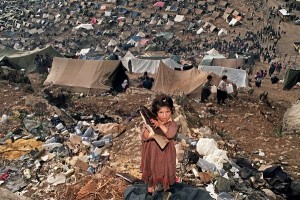 During the occupation, significant intercommunal violence spilled over into open civil war (2006-2007) across Iraq. Several hundred miles to the southeast of the Yezidi communities, the capital of Iraq, Baghdad, was ripped apart by Shi’a and Sunni death squads conducting pogroms against their respective religious sects as American soldiers, supported by Iraqi Security Forces, continued their counterinsurgency operations against Al-Qa’ida in Iraq and affiliated jihadist cells. The Yezidis were eventually drawn into this violence as the impact of Baghdad’s civil war rippled across the shredded Iraqi state.
During the occupation, significant intercommunal violence spilled over into open civil war (2006-2007) across Iraq. Several hundred miles to the southeast of the Yezidi communities, the capital of Iraq, Baghdad, was ripped apart by Shi’a and Sunni death squads conducting pogroms against their respective religious sects as American soldiers, supported by Iraqi Security Forces, continued their counterinsurgency operations against Al-Qa’ida in Iraq and affiliated jihadist cells. The Yezidis were eventually drawn into this violence as the impact of Baghdad’s civil war rippled across the shredded Iraqi state.
On April 22, 2007 a bus making its way from Mosul’s Textile Factory to the town of Bashika to drop off factory workers to their homes was ordered to pull over by armed men. They boarded the bus and checked cards for identification. Upon completion, all passengers, with the exception of twenty-three of Yezidi men, were driven deep into the city as the convoy accompanying them pulled over in northern Mosul. Within minutes, they were ordered off the bus, lined up against the wall, and shot. The convoy of gunmen departed, leaving the bodies of the men in the street riddled with bullets and the wall spattered with their blood.
According to the international media, the murders were acts of retribution against the Yezidis after an incident in the town of Bashika twenty-five kilometres north of Mosul weeks earlier. Situated in tranquil hills and surrounded by lush olive groves, the town was a popular destination for Mosul residents to retreat from the bustle of the city for family picnics and to escape from the tumult of the city. Under the American occupation, Bashika had remained relatively stable despite the vicious civil war gripping the rest of the country; there, Yezidi temples, Muslim mosques and Christian churches stood in close proximity, presenting a rare image of tolerant coexistence. The town’s quiet nature in many ways epitomized the subtle richness and cultural diversity that came to define Ninewa’s province over centuries of history.
However, the grisly stoning of Du’a stoked a blood-feud, one fed by the propaganda of the most brutal factions of the Iraq War. As Du’a’s stoning went viral, Islamist extremists smeared the reputation of Bashika, a predominantly Yezidi town, and caught the attention of the international media. By this stage, tit-for-tat killings, executions and kidnappings had become a norm in post-Saddam Iraq. This violence between the Yezidis and Sunnis underscores the sharpening divide between minority groups and Islamist Sunnis and Shiites. These developments were ignored as Petraeus’ decision to secure the streets of Baghdad and to reopen space for political coordination between Iraq’s three main sects (the Sunnis, the Shiites and the Kurds) took priority. This move obscured the urgent threats facing minorities across the country.
With intermittent violence occurring daily alongside a counterinsurgency campaign, the stage was set for a devastating attack. While ISIS operatives were retreating, Sunni insurgents moved to occupy territories in the borderlands between Ninewa in Iraq and the Syrian provinces of Deir ez-Zor and al-Hasakah northwest of Iraq. These locations, ‘strips of the most impoverished and sparsely populated parts of Iraq and Syria,’ were the easiest places to escape US and ISF soldiers.
The territories of thousands of secular and religiously tolerant groups in the province were unprotected. For extremist cells, these groups presented an opportunity to foment sectarian violence and execute attacks against Ninewa’s soft underbelly. As Iraq’s most diverse province, dotted by perceived “devil worshippers,” “heretics,” and “infidels,” the minorities were soft targets for Al-Qa’ida cells. The increasing tensions between Yezidis and hardline Sunni Islamists had created an atmosphere that the terrorist organisation could exploit despite setbacks against the American occupation and Shiite-dominated government in Baghdad. The Americans’ withdrawal from the region left minority groups vulnerable to attack, and jihadists were determined to take advantage of the security void left by the Americans.
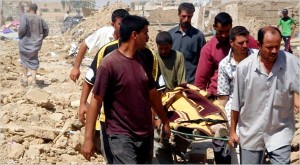
On August 14, 2007 several trucks, each laced with 27,000 kilograms of explosives, destroyed the Yezidi villages of Kahtaniya and Jazeera. The coordinated suicide attacks killed over 800 men, women, and children, and wounded thousands more. The bombings by Al-Qa’ida in Iraq against the Yezidi communities in Kahtaniya and Jazeera were the second deadliest acts of terrorism in modern history behind the September 11 attacks in the United States.
Still, the acts of terror in Kahtaniya and Jazeera never gained the traction needed to highlight the plight of the Yezidis. The mass slaughter, while initially shocking, did not gain media coverage across the Western world. The massacre blended with news of other attacks as just another bombing in Iraq. Improvised Explosive Devices and Vehicle-Born Improvised Explosive Devices had swiftly become a deadly normality for Coalition soldiers and Iraqi civilians. To American policymakers, Kahtaniya and Jazeera was a blip in their “successful” surge. General Petraeus was determined to sell a disastrous war as an unqualified success, stating twenty-four days after the mass slaughter: “To summarize, the security situation in Iraq is improving, and Iraqis elements are slowly taking on more of the responsibility for protecting their citizens.”
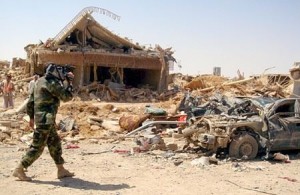
In the shattered villages of Kahtaniya and Jazeera, Yezidi communities spoke not of peace, but of impending extermination by extremist cells such Al-Qa’ida in Iraq. “Their aim is to annihilate us, to create trouble and kill all Yezidis because we are not Muslims” explained one villager from Kahtaniya. Another villager stated bluntly: “Another bombing like this and there will be no more Yezidis left.” Their warnings and pleas—wedded to the dissemination of leaflets and the spread of hate speech branding Yezidis as infidels, heretics, and outlaws—were ignored, resulting in dire consequences for the religious community and other minorities in Ninewa. Following the end of the American occupation and withdrawal of soldiers, the Mas‘ud Barzani’s Kurdish Democratic Party (KDP) and the Peshmerga militia were unable to stop attacks launched against Yezidis living outside of the established security zone by Sunni militants.
Seven years later, Al-Qa’ida in Iraq reemerged in northern Iraq, cutting a swathe through Syria and Iraq as ISIS, led by Abu Bakr al-Baghdadi and former leaders of Saddam’s military. The Peshmerga, facing military defeat, fell back, with dire consequences for the Yezidis. ISIS’s project, founded upon the ultra-violent doctrine of Abu Bakr Naji “The Management of Savagery,” sought to “purify” Iraq and cleanse it of “apostates” and “heretics.” Shiites, Yezidis, Christians, and those who refused to pay jizya, a tax historically levied on non-Muslim subjects, faced a brutal ultimatum: leave or die.
ISIS evolved into a vicious regional faction. The factions were strengthened by strong cross-border ties with Sunni tribes in Syria and Iraq, the instability created by the Syrian War, the targeting of Sunni politicians, and the political alienation of the Sunni population by Prime Minister Nouri al-Maliki. In this context, Baghdadi and his puritanical fighters decided they would cleanse Ninewa of its ethnic and religious minorities by conducting systematic rape, torture, abduction and harrowing violence against the Yezidis and other minorities.
In August 2014, in the shadow of Mount Sinjar, ISIS militants rounded up and massacred Yezidi men and boys in Sinjar and the surrounding villages of Kocho, Qiniyeh, Jadali, and Jazeera. Yezidis who refused to pledge loyalty to Baghdadi and convert to Islam were executed at roadsides and prison centres. Along the roadsides, those fleeing for Mt. Sinjar were intercepted by ISIS vehicles. Yezidi women and children were abducted in the hundreds as personal prizes for jihadist fighters and subjected to sexual abuse, forced marriages to fighters, or sexual slavery. Others were sold to traffickers whose trade had flourished since the collapse of the Iraqi state in 2003, resulting in increasingly porous borders. In the wake of the cleaning operations, 830,000 people were displaced, the entire Yezidi population in Iraq uprooted, and 40,000-50,000 fled to Mt. Sinjar, historically a place of refuge for the community during conflict.
In a nutshell, the horrific violence between the Yezidi and Sunni communities encapsulates the brutalization of Iraqi society, culture, and politics by decades of ceaseless conflict, external intervention, and brutal authoritarian rule. In equal measure, it perfectly summarizes the grave amnesia of the great powers playing geopolitics in the Middle East, whose illusions of control have stood in contrast to decades of conflict and its impact on the region and its minority communities. The decline of the Yezidi population to less than one million is a microcosm of this appalling tragedy.
—
Matthew C. K. Williams is a British freelance journalist with a MA degree in Conflict, Security and Development at King’s College London. Matthew has written for various NGOs and papers including Amnesty International, Strife, Aegis Trust, The Scottish Times and Osservatorio Mashrek. His current work for The Conflict Archives is focused on the Arab-Israeli conflict, the Iraq War, and insurgency across the Greater Middle East.”

